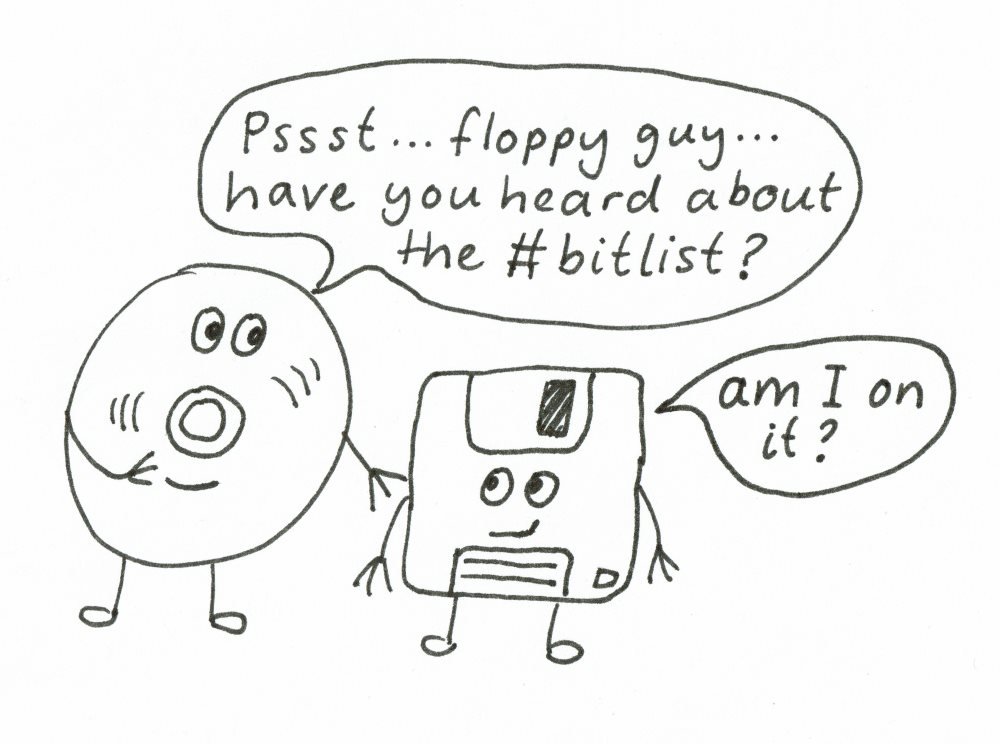 The 2018 Revision of The BitList offers a chance to update and review progress since initial publication in 2017. It was always intended as an interim statement that identified major changes or trends but offering commentary rather than a comprehensive review. It designed around the commitment that the DPC makes to the Digital Preservation Awards in alternate years, recognizing that the capacity for a full review would be limited in Autumn 2018. However, the pace of change is also relatively slow so the appetite and impact of an annual revision would be limited.
The 2018 Revision of The BitList offers a chance to update and review progress since initial publication in 2017. It was always intended as an interim statement that identified major changes or trends but offering commentary rather than a comprehensive review. It designed around the commitment that the DPC makes to the Digital Preservation Awards in alternate years, recognizing that the capacity for a full review would be limited in Autumn 2018. However, the pace of change is also relatively slow so the appetite and impact of an annual revision would be limited.
The BitList was an experiment in 2017, and attempt to establish a new narrative and new fixed point for the digital preservation community. Because this revision is largely based on that original review it is therefore also something of an experiment. As in 2017 comments and corrections and welcome, as are suggestions as to what might be added for our next planned review in 2019. However this experiment is now based on more robust appreciation of the impact that a report like The BitList can have. Two examples demonstrate the benefit.
In our initial publication last year we highlighted the ‘practical extinction’ of ‘Pre-WWW ViewData and TeleText Services’. Services like Ceefax and TeleText were tremendously important information channels during their hey-day of the 1980s, coded within TV signal of major broadcasters. We knew that these signals could be captured within the archival services that recorded the broadcast signal, but were uncertain of whether this collection could be accessed in any meaningful way. Our report caused a number of projects in the broadcast industry to contact us, with research projects and demonstrator services that explicitly sought to recover and index this signal. Thus, The BitList brought independent, international and informed verification of the relevance and importance of these projects and not surprisingly has been useful to them in encouraging further and more sustained research.
In 2017, the BitList identified ‘Community Archives and Community Generated Content’ as being Critically Endangered. This has turned out to be a timely recommendation. 2018 has been a signifcant year of commemoration and celebration of the centenary of peace at the end of First World War. Consequently a great many community-based heritage projects have sorted and digitized photographs, letters, diaries and all sorts of ephemera and remebrances from that war and the peace that followed. Sustainability of the myriad commemorations and projects was never not guaranteed nor warranted in every case. But by highlighting the risks to community generated content, the BitList has influenced policy and practice towards sustainable funding and access to a selection of these collections, hopefully providing a contribution to capacity within the various sector-leading agencies that fund and foster community-based heritage.
These two examples and many more other messages of support have encouraged us to revise and update the list marking significant changes since last year. The trends over the year have been manifold and ambiguous so it is hard to proved an overall summary of the health of the digital estate. But 3 cross-cutting themes have nonetheless impacted on a range of the items listed.
Firstly, it is hard to hide from the introduction of European General Data Protection Regulation (GDPR) on May 25th 2018. It is too early to provide a systematic view of the impact of GDPR on digital preservation but two views summarize informal discussions with DPC members. On one hand data retention is now seen as a significant liability by many different agencies, so a tendency to risk-averse and ill-informed disposal has been reported. The derrogations that apply to archives may prove insufficient if data is deleted prior to transfer. From this perspective, over-zealous or ill-informed interpretation of GDPR has become a significant threat to the digital estate. On the other hand, the opportunity to extract and store ones’ own data from service providers means that there is a new opportunity for the management and preservation of content to be delegated to individuals. Whilst there is precious little evidence that the skills necessary to achieve this purpose are widely enough dispersed, the fact of drawing attention to the value and opportunity of personal collections is itself welcome.
Secondly, efforts to foster digital preservation skills have continued apace this year, most obviously among the library and archive profession, but also among academic researchers, artists and records managers who are responsible for the creation of digital materials. These efforts have created a sense of a baseline of digital preservation knowledge and capability which is some small encouragement.
Thirdly, the sheer energy of the academic sector in the provision of new policy and new tools for the preservation of digital research outputs has continued to be sustained. The debates about open access and the value of data in the cause of reproducible science can make tough reading for outsiders, replete as they are with the jargon of numerous projects, services, policies and positions. This community has however lead a great deal of digital preservation innovation over the years. It remains an open question as to whether the numerous standards, techniques and skills assembled in the preservation of research data and research publications can be applied to other sectors easily. But the fact that these debates remain tightly coupled to the emergence of new technologies means that new digital preservation tools and techniques have continued to emerge, and are therefore available to be adopted or adapted by others where appropriate.
These are just a few of the trends that have helped form the 2018 review of The BitList: there’s a lot more in the text that follows.
Even so it seems inevitable that there will be important points overlooked or simplified or misunderstood or misinterpreted, and all comments and suggestions about how it could be improved are welcome. The BitList is an open invitation to action and an invitation to participation: to act on the recommendations; to participate in the global community which is developing good practice around digital preservation; and to participate in the enhancement of the list. The growing capabilities of the digital preservation community, evidenced in this report, makes plain that digital loss is not some inevitable or disembodied force. Nor for that matter is digital preservation a business process or a software bundle or a policy framework or an optimized workflow. It’s all of these and also a commitment we make to the future and it’s how we turn a sorry history of all the things that should have been avoided into a coming history of all that can be achieved.
